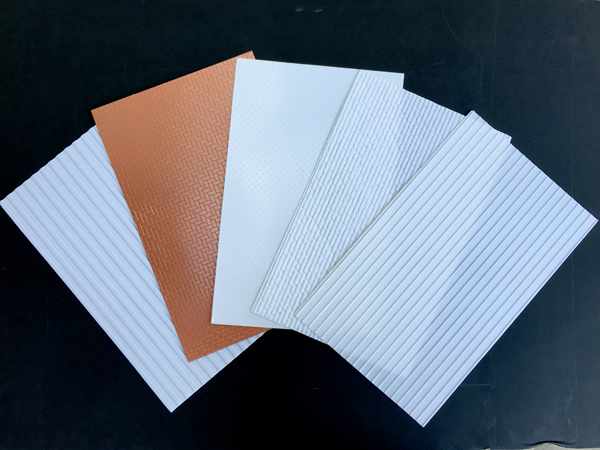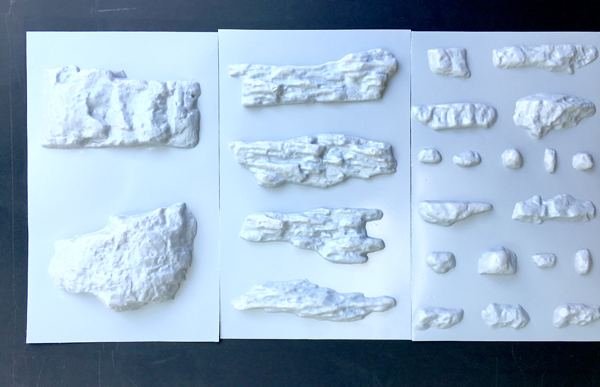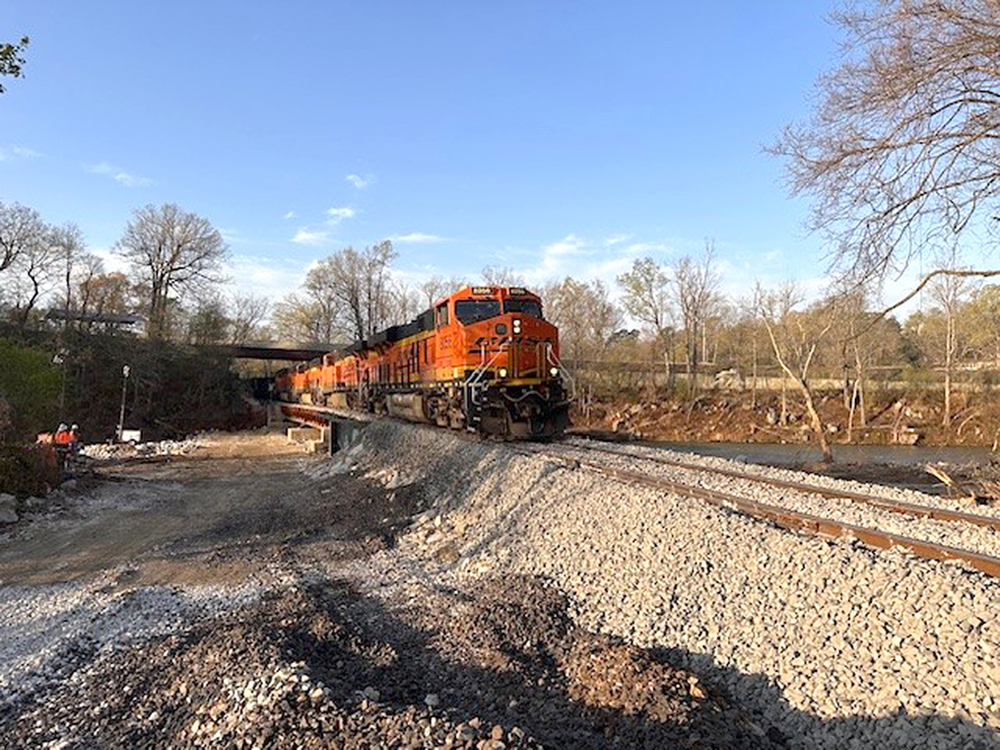JTT & Partners
Available from:
Model Rectifier Corporation
80 Newfield Ave.
Edison NJ 08837
Price: $6.50/pack (2 sheets)
Website: www.modelrec.com
7.5″ x 12″ vacuum-formed styrene pattern sheets for model building
Pros: Crisp detail molded into sheets
Cons: Small size of sheets may make covering larger surfaces difficult; rock sheets not suited for outdoor use
Detail on the sheets is good, with crisp edges to most everything. The sheets are vacuum-formed from fairly thin styrene, though the thickness varies slightly for each style. Each pack comes with two sheets, each measuring 71/2″ x 12″. This is relatively small for many large-scale applications, so you may need to look for ways to hide the seams if you’re using them to cover large areas. Some patterns, like the roofing sections, lend themselves well to this. Others, like the rock-wall sheets, will require a bit more artistry.
These thin veneer sheets are intended to be attached to a substrate of some more substantial material—wood, plastic, or foam could be used. To attach the sheets, I typically use a spray adhesive or double-sided tape, as solvents may warp the thin sheets. Most recently, I used the diamond safety-tread sheets on the deck of a diesel-locomotive project I’ve been working on. The sheets are easy to cut to size and to work with.
Different from the veneer sheets are sheets of rocks. We received sheets with three different size of rocks; large, medium, and small. While I say “large,” that’s relative, the large rocks being on the order of 5″ long and 2″ tall—certainly a lot smaller than rocks we typically use in the garden. The rocks are designed to be cut out of the sheet and applied to whatever you may be building. These are also vacuum-formed, so the rocks are hollow, and are really only “half” rocks. Because of their relatively small size, and being hollow, I’m not certain how much use they would have in an outdoor railroad environment. The vacuum-forming process also leaves some very thin areas in the plastic that can easily be crushed. However, they may make useful molds for indoor modelers, especially the larger rocks. The plastic is more rigid than a latex rock mold but, with ample mold release, I think they would work well.
Overall, I’m glad to see JTT’s line of architectural sheets expanding. This is definitely one area where more is merrier. The scale of the sheets is ambiguous enough that most would be suitable for models in all of the typical large scales.















